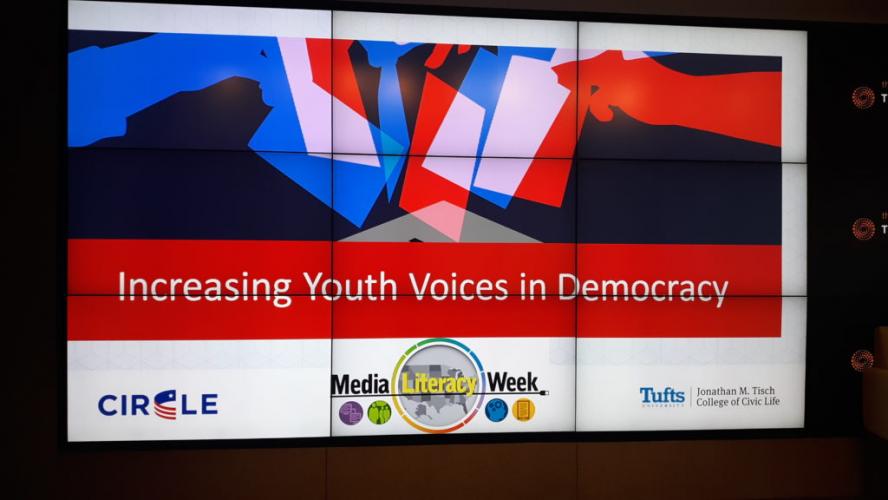Celebrating Media Literacy Week! 10 Ways Media Literacy Matters in 2020
October 21-25 was U.S. Media Literacy Week, and CIRCLE partnered with the National Association for Media Literacy Education (NAMLE) to strengthen connections between youth voices, media literacy, and democracy. We were thrilled to join NAMLE, Mediawise, PBS Newshour Student Reporting Labs, and others in Detroit and New York to think with high school students about the connections between the media they create and consume and the 2020 election.
What exactly is media literacy? NAMLE defines it as “the ability to ACCESS, ANALYZE, EVALUATE, CREATE, and ACT using all forms of communication. In its simplest terms, media literacy builds upon the foundation of traditional literacy and offers new forms of reading and writing. Media literacy empowers people to be critical thinkers and makers, effective communicators and active citizens.” As such, it is about acquiring specific knowledge and skills—like learning the difference between a news item and an op-ed, or how to create a GIF to show your support for an issue—but, as the definition suggests, it’s about much more than that.
CIRCLE has written a considerable amount about another kind of literacy: “civic literacy”. That’s also about knowledge (understanding how elections and government works, how change is made) and skills (how to coordinate a group, how to speak persuasively) but it’s also about a deeper understanding of what actions are possible, and of how someone can go about taking those actions to try to achieve change or have an impact.
Given the civic purpose explicit in that definition, how can media literacy facilitate both the WHAT and the HOW? Many of the messages youth receive that inform their answers to those questions come from media. As such, we believe it’s important to foster a conversation about media literacy that examines its role in promoting engagement: how young people can learn, not just to better understand and use media, but also how to apply that knowledge for a civic purpose. That conversation is especially critical as we approach the 2020 election, when young people will be inundated with political media and when many will create their own media to support candidates. And the conversation must include questions about how media literacy can potentially help counter the marginalization that many youth experience.
In the spirit of that conversation, here are some ideas of actions we consider key to media literacy—especially in an election year. What can you add? Use #MediaLitWk on social media to contribute and comment!
- Bringing an opinion, informed by your own experiences and reliable background information, to conversations about elections and public issues
- Sharing reliable information with others about issues important to you, your family, and your friends
- Evaluating news media to understand how journalistic approaches and processes influence what is covered and written
- Finding and verifying information about how, where, and when to vote, and creating media to share this information with others
- Analyzing political candidate ads and information, especially on social media
- Developing and distributing guides to help others understand voting and elections, or an issue you really care about on the ballot
- Creating media about the people and issues in a neighborhood or community that you think hasn’t been covered accurately and are important to the election
- Creating media about the people and issues in a neighborhood or community that has few local media outlets
- Partnering with a media outlet to amplify diverse youth voices on voting and issues relevant to the election
- Documenting youth election engagement to share with news media and others that youth are engaged and can be better represented in media, especially youth of color



